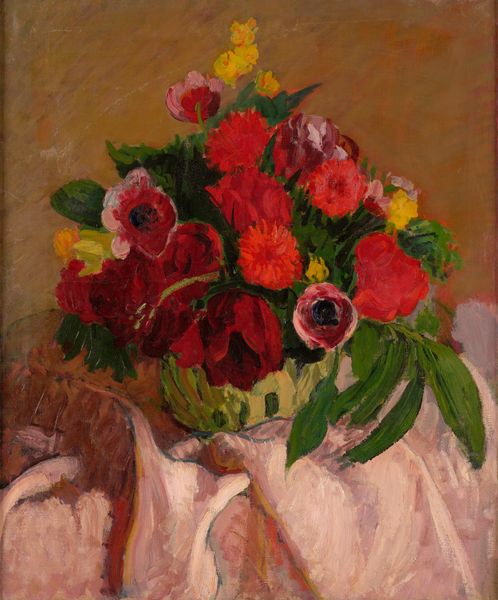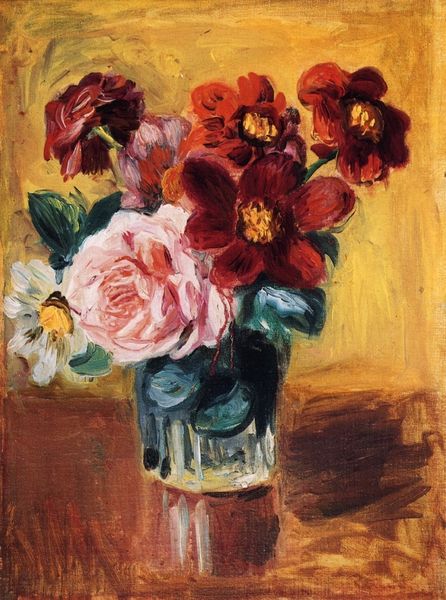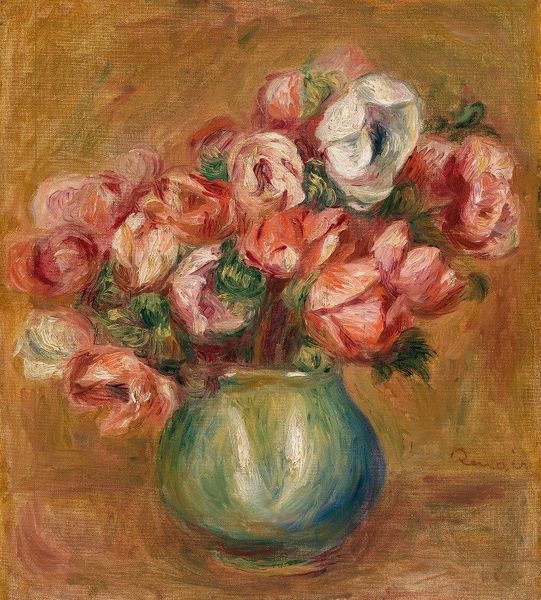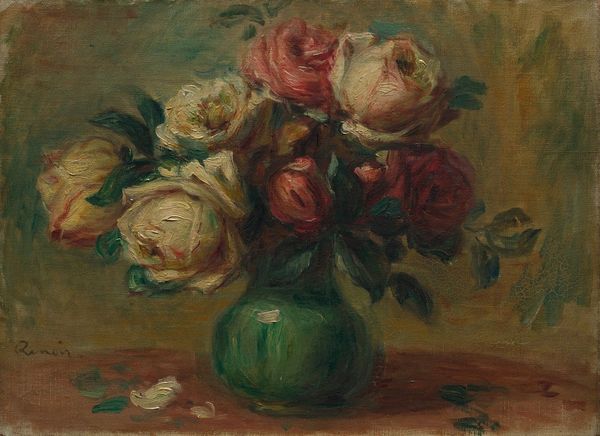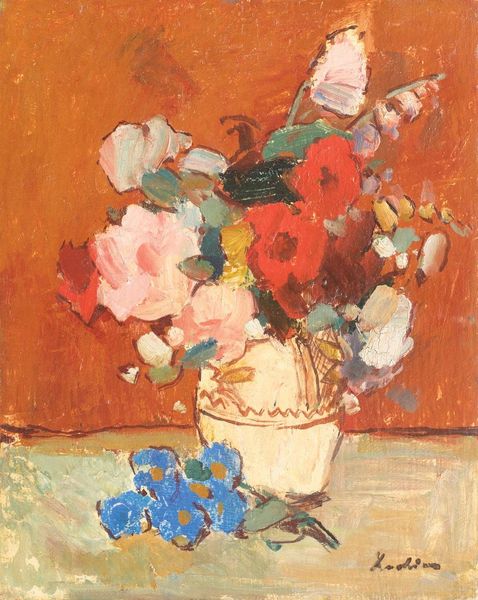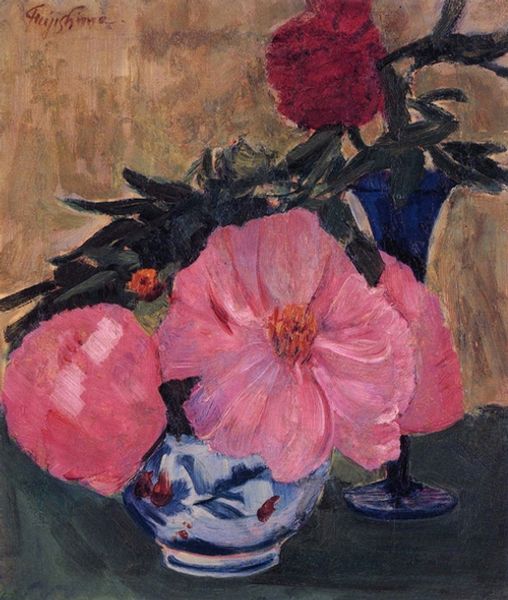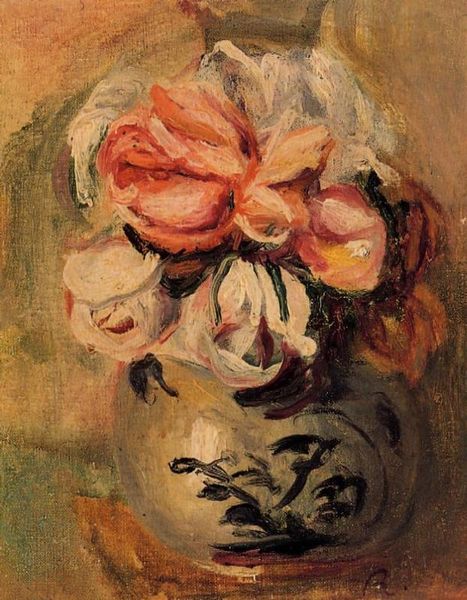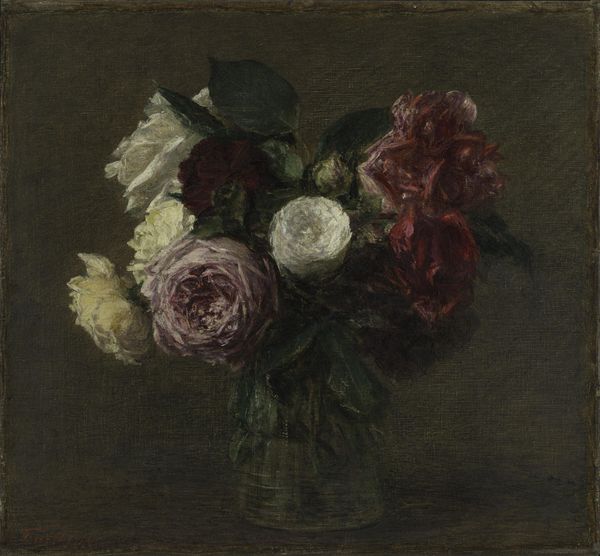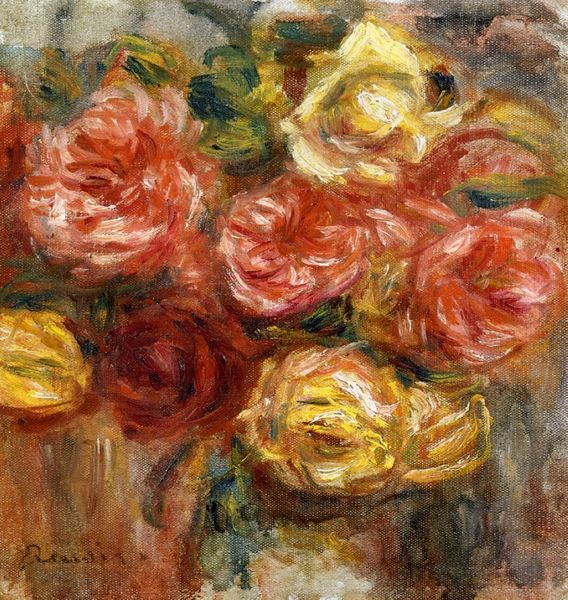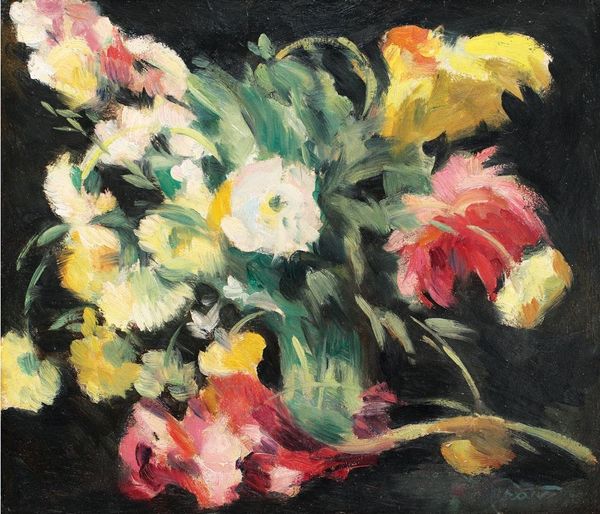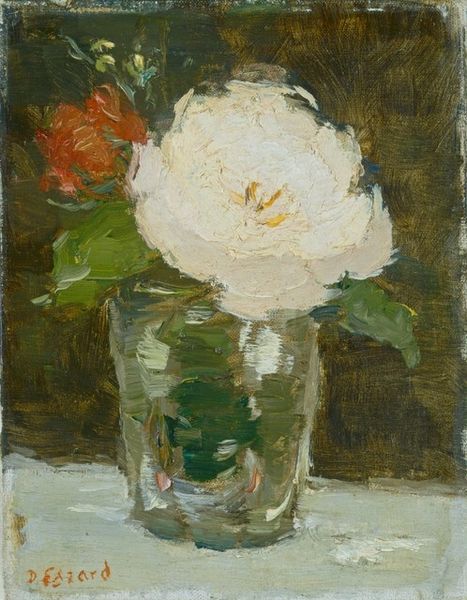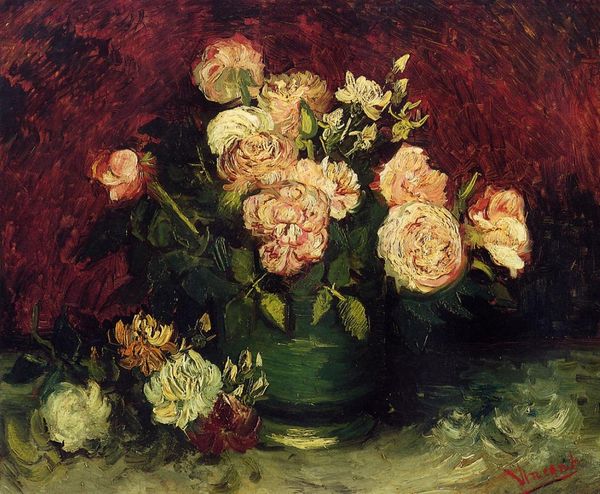
Dimensions: overall: 8.7 x 14.9 cm (3 7/16 x 5 7/8 in.) framed: 19.3 x 25.4 x 4.7 cm (7 5/8 x 10 x 1 7/8 in.)
Copyright: National Gallery of Art: CC0 1.0
Curator: Let's consider this work, entitled "Roses in a Vase." It’s an oil painting created sometime between 1880 and 1900. Editor: Immediately striking, isn't it? There's a sense of weight, a quiet solemnity evoked by the dark background, despite the lightness of the floral subject matter. Curator: It's interesting to think about where this was made. How available were these paints, what were the typical costs for canvas or this kind of still life? Consider the rising middle class wanting decoration that spoke of beauty and gentility. Editor: And how that rising class affected painting. It does strike me that the artist is not necessarily trying to faithfully represent the roses, instead exploring shape, color, and texture within a deliberately limited composition. Look at how the light catches the petals. Curator: This wasn't a singular painter locked in a studio. Rather this still life entered a wider chain of studios making paints, canvases, stretchers, all bought and sold and ultimately ending up on a wall or mantle in someone's house. Editor: True. The heavy brushstrokes speak to an almost impatient desire to capture the essence of the roses, which is what I find visually engaging here. See how the impasto lends a sculptural quality to the blooms. The creamy white next to those blushes of pink? Beautiful! Curator: Yes, and how the acquisition of that painting reinforced status. This artwork had a cultural job, reflecting the buyer's sensibility as well as some amount of their available funds. It had a function, far beyond simple decoration. Editor: Absolutely. The contrast between the fragility of the flowers and the almost crude application of paint is captivating. It forces one to consider the temporal nature of beauty, artifice, and nature. Curator: Thanks to increased access to cheaper art supplies during this era, paintings became material objects that permeated everyday lives. The value and meaning were created as it passed through studios and businesses. Editor: So, as we depart, it seems these lovely flowers invite both introspection on the visual language and also a consideration of what it represents within broader society. Curator: Precisely, thinking of art as an object caught within networks, impacting everyone from the maker of paint to the proud new owner.
Comments
No comments
Be the first to comment and join the conversation on the ultimate creative platform.
